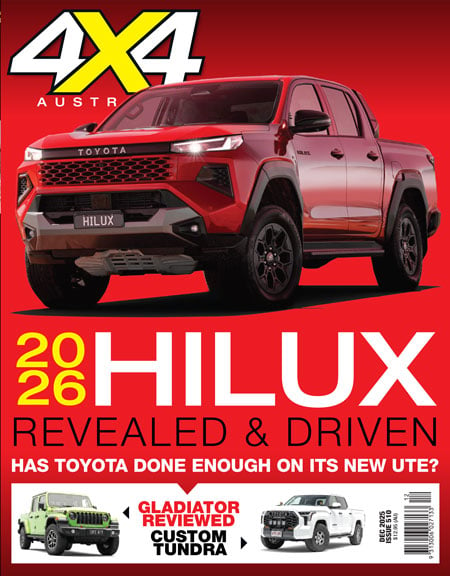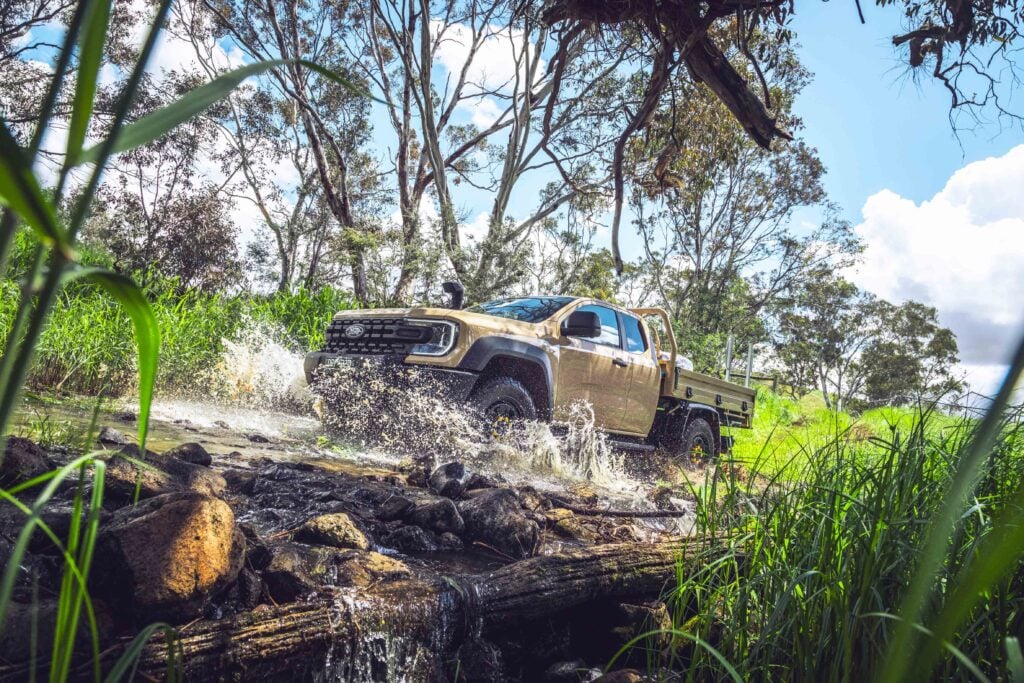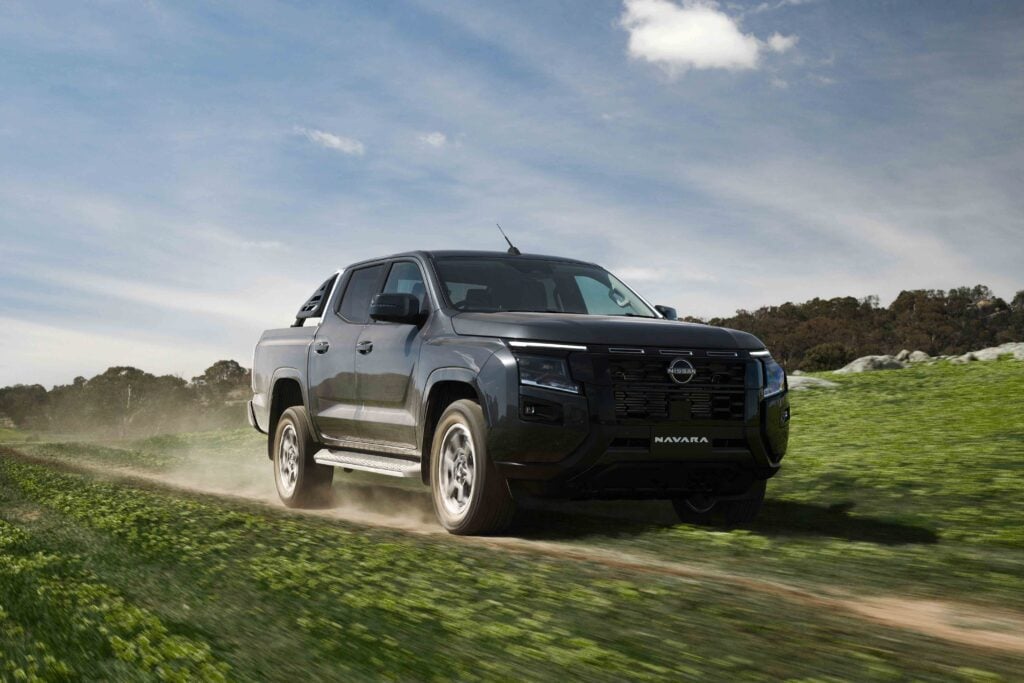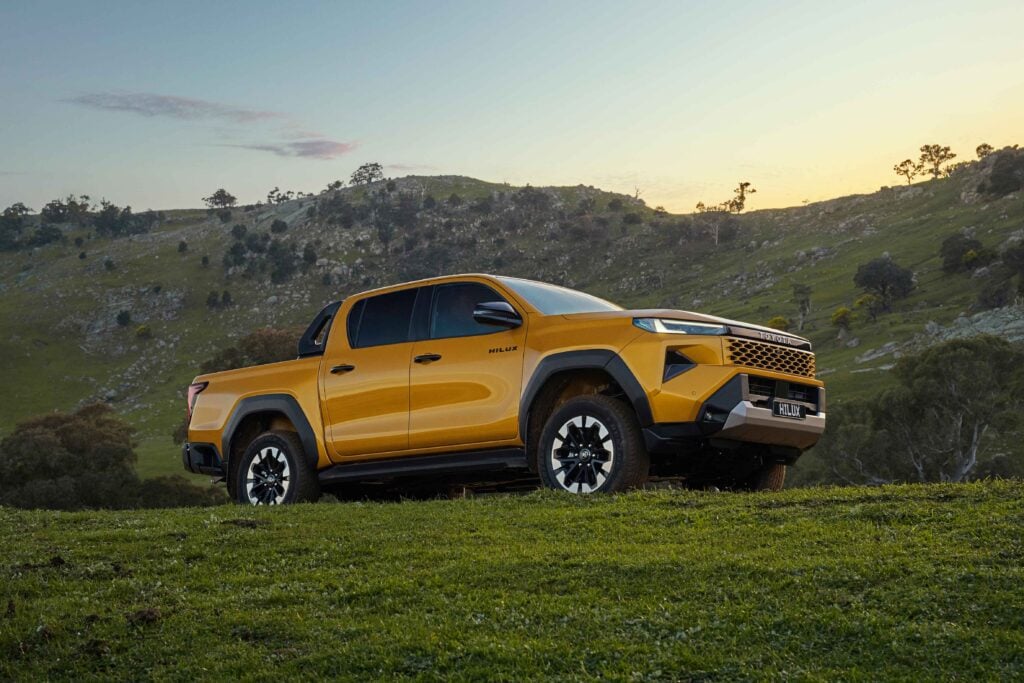Ask two 4WD diehards to name the greatest off-roader ever built and you’ll get two different answers. Ask six, and you’re bound to start a full-blown campfire debate.
So, to settle it once and for all, we handed the job to the 4X4 Australia inner circle – a panel of seasoned experts who’ve been testing, breaking, fixing and exploring in four-wheel drives for decades. Our six judges – Matt Raudonikis, Ron Moon, Dean Mellor, Ian Glover, John Rooth and Fraser Stronach – bring more than 260 years of combined 4×4 experience to the table. If they can’t settle the score, no one can.
Each submitted their personal top 10. Points were awarded in classic countdown style – 10 for first place, down to one for tenth – and after crunching the numbers, we landed on the definitive verdict: the 10 most significant 4x4s of all time, ranked by the people who know them best.
Let’s count them down – from trailblazers to timeless legends, here are the greatest 4x4s ever made 👇
10: Toyota LandCruiser 80 Series – The ultimate all-rounder
With strength, durability, and all-coil suspension, the 80 Series is considered by many to be the best-ever LandCruiser.
Roothy reckons, “All LandCruisers are good, but the 80 Series is the best of the lot.” And he won’t find any argument with Ron, who says the 80 Series “was the best LandCruiser wagon ever built – they’ve gone downhill from that pinnacle! The latest might be smoother, faster and more refined, but they are far less a real 4×4.”
The 80 Series arrived in Australia in early 1990 with considerable fanfare. Seemingly caught ill-prepared by the 1987 release of Nissan’s GQ Patrol, Toyota was keen to replace its veteran 60 Series due to poor sales against the more sophisticated all-coil GQ. Some say the 80 was rushed onto the market, such was the concern over Nissan’s success.
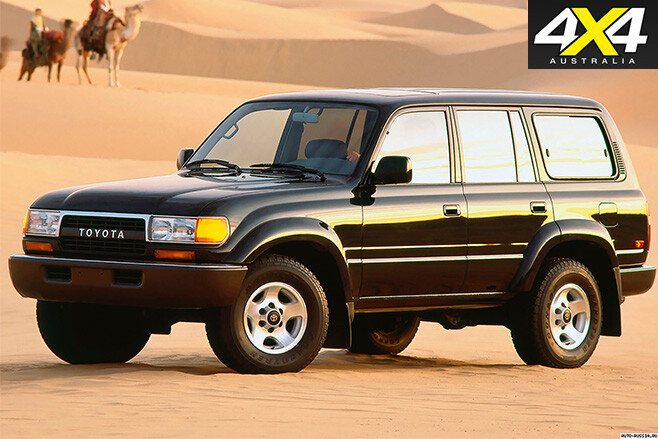
The 80 Series represented a giant leap forward from the 60 Series thanks to the introduction of coil-sprung suspension and the availability of a full-time 4WD system.
At launch in Australia, the 80 came in a 10-model range, two of which retained part-time 4×4, courtesy of the 70 Series. The rest, significantly, came with full-time 4×4. The part-time 4×4 base models also came with vertically split (barn) rear doors rather than the horizontally split tailgate used in the rest of the range. And, of course, all 80s rode on coil springs.
Two entirely new engines, the 1HZ diesel and 1HD-T turbodiesel, debuted with the 80, while the old 3F petrol six from the 60 and a fuel-injected version of the same (3F-E; auto only) made up the range. Just two years later, the 3F and 3F-E were replaced by the new 1FZ-FE; a thoroughly modern (at the time) 4.5-litre alloy-head twin-cam four-valve inline six. In 1995, the somewhat troublesome 1HD-T engine was replaced by the multi-valve 1HD-FT turbodiesel.
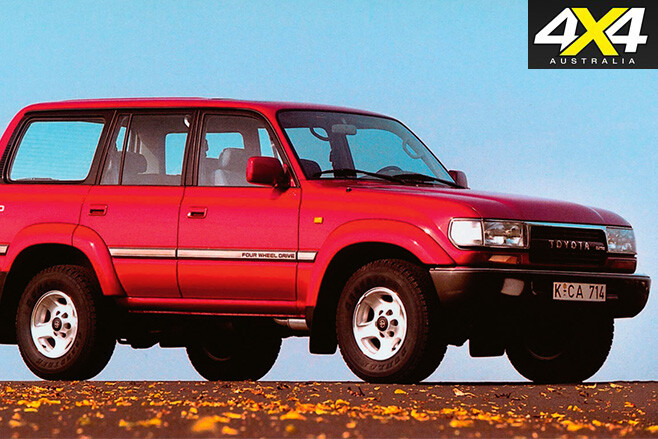
In terms of sophistication, the 80 Series represented a giant leap forward from the 60 Series thanks to the introduction of coil-sprung suspension and availability of a full-time 4WD system.
With the benefit of hindsight, it’s fair to say the transition from 60 to 80 was far more significant than the transition from the 80 to the 100 Series. While the 80 was a far more comfortable and sophisticated 4×4 than any Land Cruiser before, it retained the legendary toughness and go-anywhere ability of its predecessors.
As Roothy says: “Get a good one and play in the dirt forever!”
8 (tied): Land Rover Discovery 3 – Trailblazing tech
Land Rover’s third-generation Discovery was a game-changer for hard-core 4×4 technology.
Despite a name that suggests evolution rather than revolution, the Discovery 3 owed nothing to the 1990 original Discovery or the updated (1999) Discovery II. Both of those vehicles had live axles front and rear and were based heavily – chassis and body – on the first-gen Range Rover.
The Discovery 3 story starts with Ford’s purchase of the Land Rover brand in 2000. Ford was keen to address Land Rover’s sales decline, given the second-gen Discovery – then Land Rover’s best-selling model – was getting very long in the tooth.
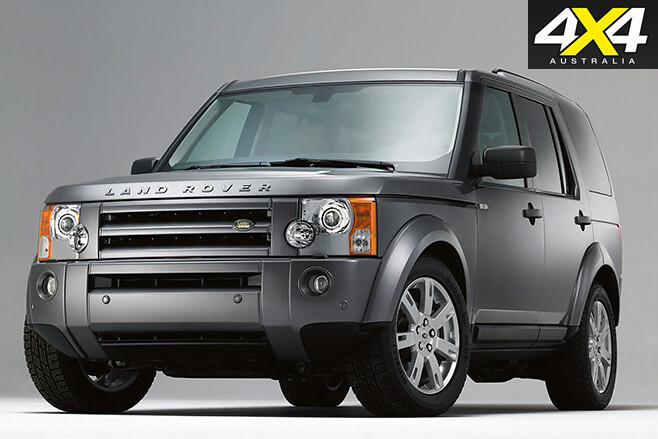
What Ford did was throw bucket-loads of money (reportedly A$600 million at the time) at Land Rover to produce a completely new clean-sheet design. Nothing was to be carried over from the previous Discovery.
Aside from a brilliantly clever, spacious and versatile cabin, the Discovery 3 introduced many significant new technical features, led by fully independent suspension with height-adjustable air springs on up-spec models. This was an elegant solution to the age-old on- and off-road ride-height compromise that has plagued 4x4s for decades.
The Discovery 3 also introduced what was the first of the new-generation high-output turbodiesel engines to appear in a serious family 4×4: a superb 2.7-litre V6 with no less than 140kW and 440Nm. It was backed by the option of a super-slick six-speed ZF automatic. This powertrain combination – modern V6 turbodiesel and ZF auto – was, at the time, a huge leap forward for family 4x4s. And if diesel wasn’t your go, you could always have the very sweet 4.4-litre petrol V8 or the budget-priced Ford-sourced 4.0-litre V6.
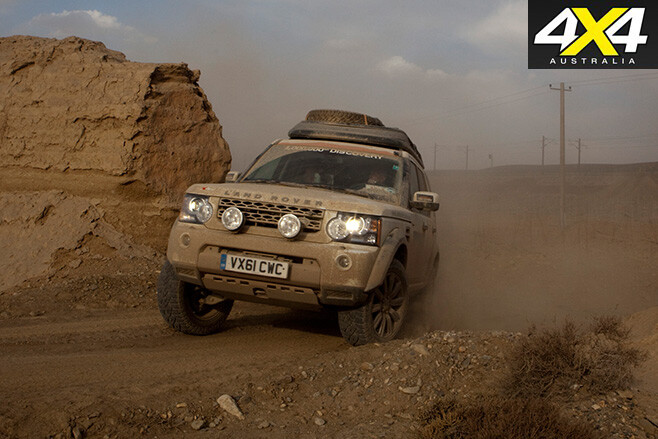
The Discovery 3 also introduced Land Rover’s brilliant, and now much-copied, Terrain Response system. Terrain Response linked control of the engine, gearbox, height-adjustable suspension, electronic differentials, and all the electronic chassis systems – like traction and stability control – into a number of driver-selectable modes to improve performance on different terrain.
The Discovery 3 was so far ahead of its time that the Discovery 4, which arrived in 2009, was essentially a makeover, retaining all of the Discovery 3’s essential design elements, from seating to suspension.
8 (tied): Toyota LandCruiser 70 Series – Keeping it simple
The LandCruiser 70 Series is proof that good design stands the test of time.
Matt Raudonikis owns a 1985 70 Series and is a big fan of this basic, brick-dunny-tough, no-nonsense 4×4. He calls it “an enduring workhorse that has been with us for more than 30 years now and is still the toughest 4×4 workhorse available today.” He’s unlikely to find anyone who’ll argue that.
The 70 Series arrived in 1984 as a replacement for the hugely successful 40 Series, so it had very big shoes to fill. Overall, it’s bigger than the 40, though the 70 retained some of the 40’s styling cues and, of course, a ladder-frame chassis with front and rear leaf-sprung live axles.
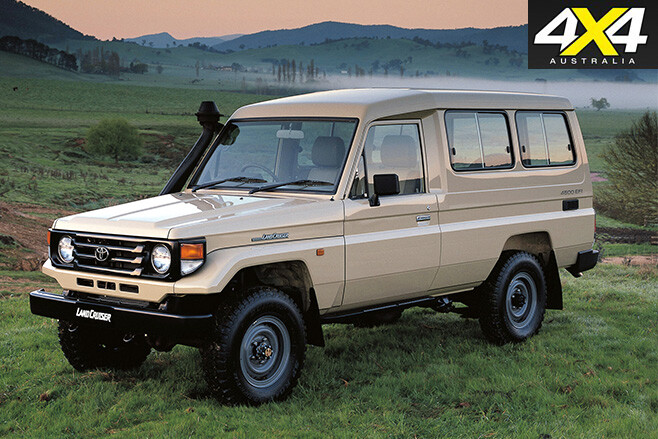
At launch, it came in a mind-boggling array of models with different bodies (wagon, ute, cab-chassis, and TroopCarrier) on three different wheelbases (short, mid, and long) and a number of engines. There was also a largely unloved coil-sprung short-wheelbase version called the Bundera.
Right from the start, the cab-chassis and TroopCarrier variants, both built on the long wheelbase, proved most popular. In the early ’90s, the model range was slimmed down, and by 1993, the short- and mid-wheelbase models had disappeared.
The first major upgrade came in 1999 when coil springs replaced leaf springs at the front, and the rear leaf springs were lengthened to improve unladen ride quality. The ute’s cab also gained some much-needed length behind the seats. What some consider the best engine ever to grace a 70 Series arrived in 2001 – the 1HD-FTE 4.2-litre six-cylinder turbodiesel (from the 100 Series but non-intercooled).
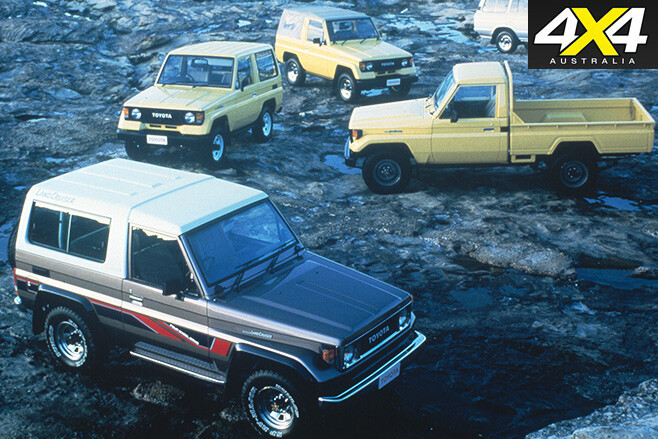
The 70 Series range we know today arrived in 2007 with the then-new 4.5-litre turbodiesel V8, now the only engine available across the range. The 76 four-door wagon – new to Australian buyers but previously available overseas – joined the 78 Troop Carrier and the 79 Cab Chassis at that time. Since then, driver and passenger airbags and ABS have helped ramp up the 70’s safety credentials. In 2012, the 79 Series Double Cab joined the line-up.
Of the 70 Series, Ron says: “At a time when real tough and relatively basic 4x4s are becoming ever harder to find in the new-vehicle marketplace, the 70 remains a beacon of light … and hope!” Amen to that!
7: Toyota LandCruiser 60 Series – Family-friendly off-roader
The 60 Series LandCruiser added family-friendly comfort to Toyota’s industrial-grade toughness.
Toyota started planning the 60 Series in 1976. The idea was for a bigger, family-style 4×4 that could hopefully gain a foothold in the growing US market sector led by the Jeep Wagoneer. Like the Wagoneer, the 60 Series needed to have more of the feel of a passenger station wagon, with a comfortable ride and a more luxurious, better-equipped interior.
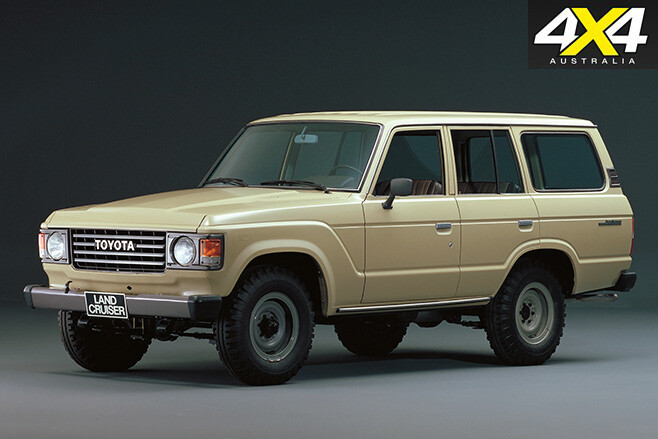
Consideration was given to independent front suspension for the 60, just like the Wagoneer, but this was rejected in favour of a modified version of the live-axle leaf-spring setup of the earlier FJ55. Apparently, there was no consideration of coil-sprung live axles, as per the Range Rover – something that would come with the 80 Series a further decade down the track.
The 60 wasn’t Toyota’s first station wagon. Before the 60 there were long-wheelbase wagon versions of the 40 (45 Series) and, more significantly, the FJ55. However, neither the 45 nor the 55 were designed specifically for the recreational market, as was the 60.
In 1982, the popular HJ60, with its bigger six-cylinder 4.0-litre 2H diesel engine, was introduced. In many ways the HJ60 was the defining vehicle of the 60 Series range. As well as its bigger engine, the HJ60 also featured a five-speed transmission, an optional sunroof, power mirrors and other luxury features.

“The 60 might have used leaf springs, but it’s a purposeful, functional off-road wagon that was the right size, the right shape and has stood the test of time.”
As Matt Raudonikis says: “The 60 might have used leaf springs, but it’s a purposeful, functional off-road wagon that was the right size, the right shape and has stood the test of time.”
For Toyota, the 60 Series brought a split in the LandCruiser family between commercial and recreational 4x4s. Where the 40 gave birth to the 50 Series and was eventually replaced by the enduring 70 Series, the 60 started the line that progressed to the 80, then the 100, the 200 and now the 300.
6: Nissan Patrol GQ – Coils for the win
After playing second fiddle to Toyota, Nissan surged ahead of its long-time rival with its coil-sprung GQ Patrol.
“Not only was the GQ Patrol more comfortable on the road than the leaf-sprung LandCruiser 60 Series of the day, it also offered better off-road performance thanks to its long-travel coils,” Mellor says glowingly of this breakthrough vehicle from Nissan, launched in 1987.
However, the GQ wasn’t Nissan’s first recreational or family 4×4. That honour goes to its predecessor, the MQ, which marked the first significant change of direction for the Patrol.
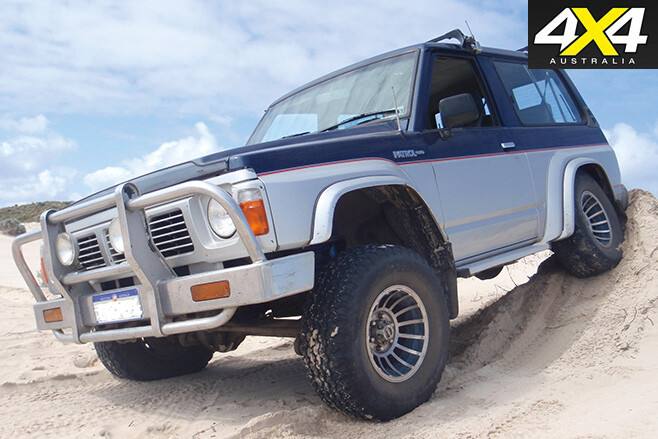
Nissan actually produced its first Patrol around the same time as Toyota made its first LandCruiser – and for the same reason: answering a call from the US military for a light 4×4 that could be quickly and easily produced after war broke out in nearby Korea in 1950. Like the original Land Cruiser, the first Patrol also looked very much like a WWII Jeep.
Fast forward to 1979 and the far more sophisticated MQ was, according to Glover, “extremely capable off-road and also boasted the best on-road dynamics of any Japanese 4×4”. It proved a great basis for the even better GQ.
The GQ, with its coil-sprung live axles, may have arrived 17 years after the Range Rover was launched with coils, but it was the GQ – rather than the Range Rover – that really consigned leaf-sprung recreational 4x4s to history once and for all.
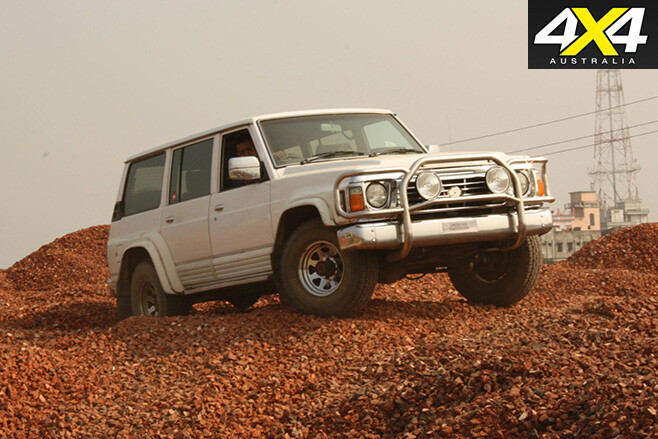
The GQ was a huge coup for Nissan in a market dominated by Toyota. In fact, the GQ hurt Toyota so much that the 80 Series was rushed into production in 1990, ahead of the original schedule. As a result, it was somewhat compromised. It remains a pinnacle for Nissan 4x4s, as its subsequent 1997 GU (and later variants) have failed to keep pace with Toyota’s later models.
As Roothy put it: “Wherever people are playing off-road you’ll find plenty of jacked-up, big-wheeled Nissan GQs. It’s still the best starting point for anyone hanging out to build their own super capable off-road weapon.”
5: Toyota HiLux – Australia’s favourite workhorse
From humble beginnings, the Toyota HiLux has become a 4×4 with universal appeal.
According to Mellor: “There was really nothing remarkable about the HiLux – it was a pretty basic vehicle – but as the years went by it became available in a variety of body styles including single, extra and double cab, with pick-up or tray, and that made it appealing to a wide audience.”
The first HiLux appeared in 1968 as a 4×2 only. It was slightly smaller than the Toyota Stout light truck of the day and in some markets it replaced the Stout, while in others it sold alongside it.
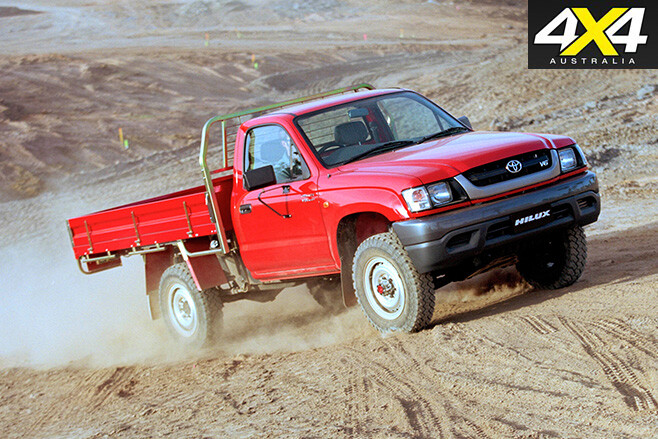
The second-generation HiLux arrived in 1972, but was again 4×2 only. Buyers would have to wait until a year after the third generation launched in 1978 for the first HiLux 4×4. Unlike the 4×2 models, it featured live axles and leaf springs at both ends. At the time, it was only available as a single cab, with dual-cab models not appearing until 1982.
The HiLux wasn’t the first dual-cab ute – Toyota had a dual-cab version of its Stout as early as 1960, and there were others before that. However, there’s no doubt the HiLux 4×4 double-cab of 1982 was the vehicle that began the world’s love affair with dual-cab 4×4 utes.
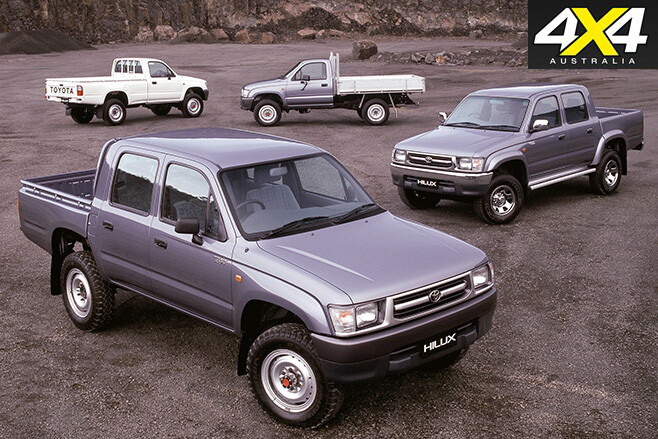
Today, the modern dual-cab – with its sophisticated powertrains and equipment – is very much a match for most 4×4 wagons in terms of performance and safety. It also beats a wagon hands down for versatility. The dual-cab ute is the default 4×4 for transporting a family and for recreation in Australia. Various Toyota HiLux models seem to populate the roads of nearly every country in the world.
According to Moon: “The HiLux just delivers on good levels of features, ride and performance; all backed up by Toyota’s reliability and wide-ranging service network. There might be a lot of players in this ever-crowded field, but the HiLux has been, and still is, the king!”
It’s simply impossible to imagine a world without Toyota’s HiLux.
4: Range Rover (1970) – Luxury meets capability
With all-coil suspension and full-time 4WD, the first Range Rover brought comfort and technology to the 4×4 world.
Ron Moon is right when he says: “Surprisingly, as it may seem today, [the Range Rover] was never designed as a luxury vehicle.” The original 1970 Range Rover was the brainchild of Charles Spencer King, Rover’s chief of new vehicle projects at the time, and was simply conceived as a passenger 4×4 rather than a work 4×4 like the Land Rover.
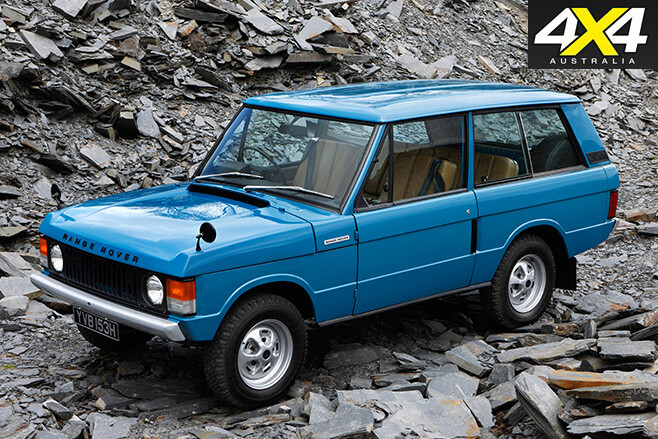
Despite its eventual success, not everyone at Rover was convinced that Spen King (as he was known) was on the right track at the time. As Glover points out: “Spen King came at 4×4 design from a totally different [design] direction – namely, all-coil suspension – after he drove a Rover sedan over a freshly ploughed field.”
Even Land Rover’s chief engineer of the time, Tom Barton, wasn’t convinced of the concept, especially the radical change from leaf to coil springs for the Range Rover’s live axles. Rover’s sales department also thought the whole Range Rover idea was stupid. “What! A Land Rover costing 2000 pounds – you must be mad!” was its reaction.
At the launch of the second-generation Range Rover in 1994, Spen King recalled of the original: “We did it off our own bat. It wasn’t management saying ‘do this’; we did it ourselves because we thought it was a worthwhile thing to do.”
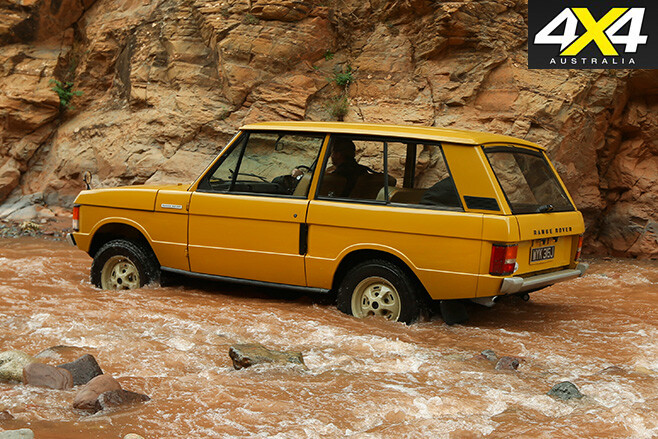
The Range Rover introduced full-time four-wheel drive. “You have the rotating machinery at both ends so you may as well use it,” King said. “It saves on tyre wear and fuel and it confers better grip – a prime safety factor. The security on slippery, nasty roads is just wonderful.”
The Range Rover was an instant success worldwide and remained in production virtually unchanged for more than 10 years, until the four-door model was introduced in 1981. With various updates, it continued until 1996 – two years after the launch of the second-gen Range Rover.
According to Glover: “The Range Rover was simply a masterpiece and it remains a delight to drive today.”
3: Land Rover – The original adventure machine
The Land Rover was created as a stopgap model, but its role in expeditions helped open up the planet like no other vehicle.
The Land Rover reinforces the significance of the Army Jeep, because just like the 40 Series Toyota, it has Jeep in its history. In fact, a WWII Jeep, owned and used by Rover’s technical chief Maurice Wilks on his rural property in Wales, UK, was the 1947 inspiration behind the original Land Rover.
At the time, Rover badly needed a new model to stimulate sales, given the limited demand for its upmarket saloons in a depressed post-war market. Wilks’s war-surplus Jeep was proving just the thing on his farm and had him wondering if such a versatile, simple and robust vehicle, aimed at farmers rather than the military, could be the thing to help the ailing Rover on the path to recovery.
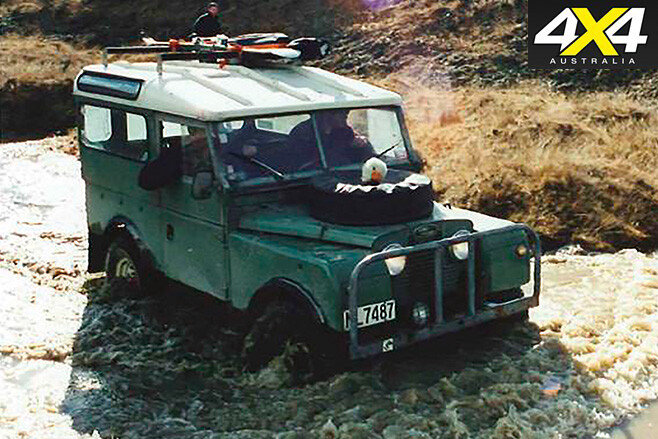
Within months, even before the first prototype was built (on a Jeep chassis, no less), the idea got the go-ahead from Rover management. Given it was seen as a stopgap model, the priority was to produce the Land Rover as quickly and as cheaply as possible. That meant the use of flat body panels made from war-surplus aluminium alloy, as steel was in short supply. It also meant an absolute minimum of tooling.
Working at an incredible pace, Wilks’s team had the Land Rover ready for its public debut at the Amsterdam Motor Show in April 1948. As Glover says: “Wilks kept it simple and useful with uncomplicated engineering and barebones comfort levels. It worked, and popularised the idea that having a four-wheel drive made sense.”
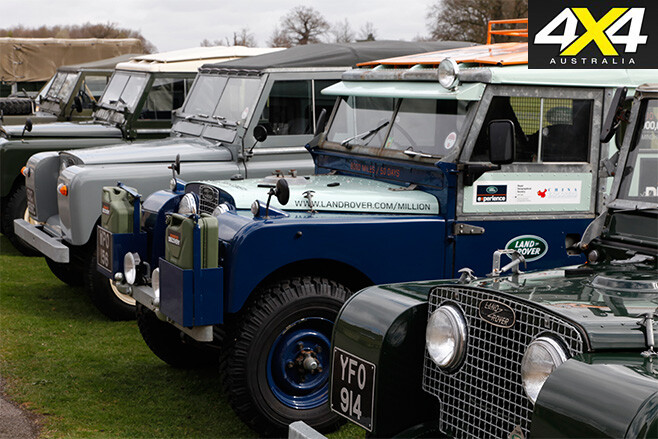
But the Land Rover’s success was not just due to the vehicle’s attributes. Britain’s extensive influence through its Commonwealth and former empire meant ready access to export markets in Africa, the Middle East, Southeast Asia and Australia – all regions where a simple and robust 4×4 was more than useful.
While the Land Rover was initially aimed at rural buyers, as Dean Mellor explains: “It soon found favour with a new breed of intrepid off-road adventurers who used the vehicle to explore the world and, in the process, open up vast areas to civilisation.”
Over the years the Series I evolved into the Series II, Series IIA and Series III that lasted until 1985, but all the while retaining the key attributes of the 1948 original – including leaf-sprung live axles, just like the WWII Jeep.
2: Toyota LandCruiser 40 Series – Toyota’s legacy
The 40 Series LandCruiser laid a solid foundation for Toyota’s – and Japan’s – international success.
Interestingly, there’s a fair bit of Jeep, and even US military, in the birth of the LandCruiser – though the 40 wasn’t the first. Travel back to 1950, just five years after the war’s end, and Japan was effectively under US military occupation, as the Americans tried to reshape Japan’s commercial and social fabric and disband its military. What new military equipment Japan was allowed to procure for its self-defence force was of American origin.
That changed when war flared in nearby Korea in 1950 and US military production came under pressure. As a result, the Americans asked Japanese car companies to design light 4x4s (among other vehicles) that could be built quickly and in large numbers.
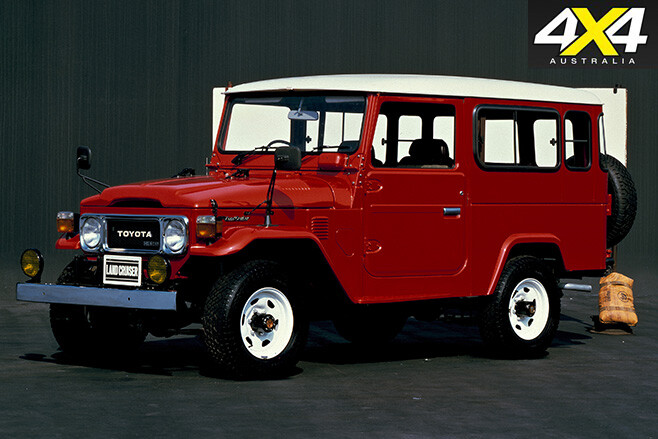
To cut a long story short, Toyota’s first effort looked very much like a US military Jeep. Like the Jeep, it had live axles and leaf springs at both ends. It was designated the BJ – ‘B’ for its six-cylinder engine, and ‘J’ for Jeep. The new vehicle was initially called the Toyota Jeep until Willys-Overland successfully claimed trademark violation.
In 1955, the BJ became the 20 Series when it was revamped for export, although sales were limited due to patchy reliability. Toyota quickly learned from its early mistakes and launched the 40 Series in 1960. In one form or another, the 40 would remain in production until 1984. It introduced the qualities that would make LandCruiser the dominant force it is today. “This is the vehicle that stole market dominance from the Brits (Land Rover),” Ian Glover says.
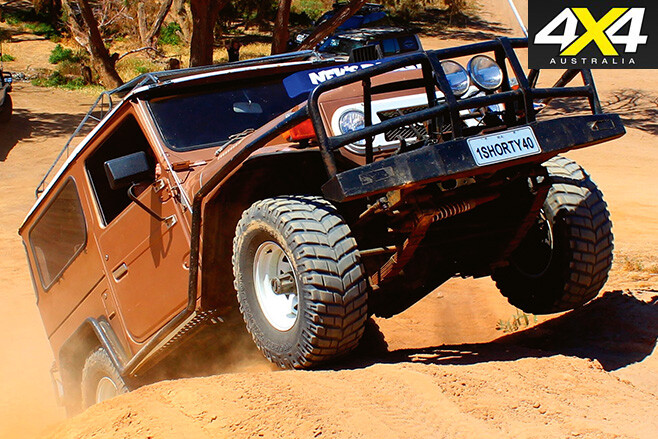
Along with a big jump in build quality, the 40 Series added comfort and convenience features rarely seen in 4x4s of the day. Improved production processes also meant it could be built faster and more affordably. The 40 Series came in a wide range of models – short-, mid- and long-wheelbase; two-door hard-top, soft-top, TroopCarrier and cab-chassis – with petrol or diesel engines.
Its global success was mirrored here in Australia, where you still see plenty working hard or serving as weekend warriors. Ron’s advice: “If you’ve got one, hang on to it!”
1: WWII US Army Jeep – The Godfather
The US Army’s WWII Jeep was developed for a specific military role, but it changed the world in times of peace, too.
Most commonly known as the Willys-Overland MB or the Ford GP – after the two companies that produced the majority of them during the war – the Jeep’s design owed more to the Army than to any single carmaker. Of the several companies involved, Bantam arguably deserves the most credit.
In its early days, it wasn’t even called a Jeep – that name came later. To this day, arguments continue over where the name originated. It wasn’t officially registered until 1950, when Willys-Overland claimed the rights, having built more Jeeps than any other company during the war.
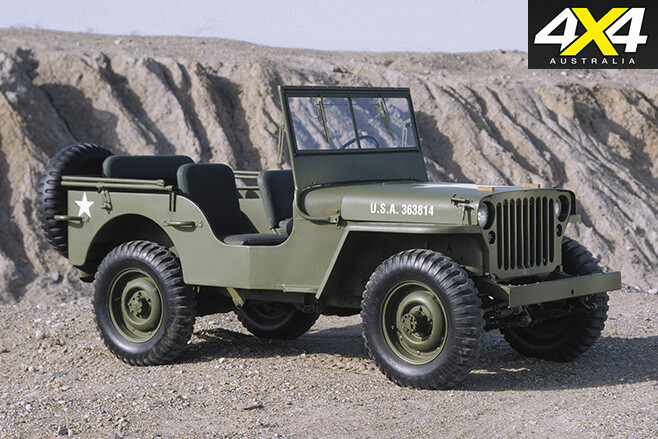
The Jeep story begins in 1938, when the US military set out to modernise its equipment. It issued hundreds of tenders for new vehicles, including one for a Command Reconnaissance Vehicle. The Army laid down strict requirements for size, weight, power and performance – and it had to be four-wheel drive.
The demands were so tough that the original prototypes from Bantam and Willys-Overland, and later Ford, were all rejected. More prototypes followed, along with claims the Army had secretly shared designs between bidders. After several redesigns, a final design was settled on by mid-1941. At its core was a separate chassis and live axles on leaf springs front and rear – a layout that would shape 4×4 design for decades.
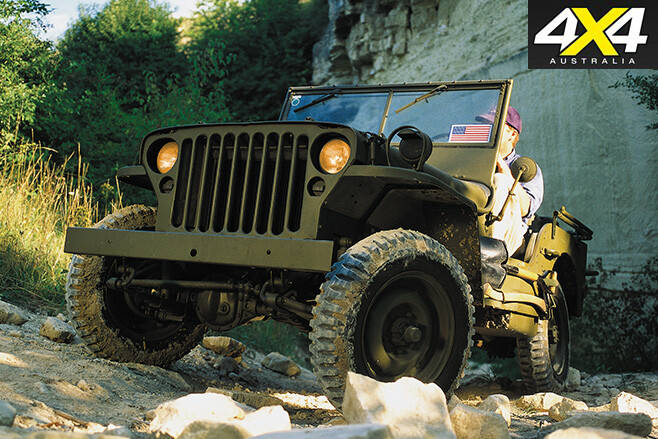
During the war, the Jeep did far more than reconnaissance. It hauled supplies, carried troops, towed guns and aircraft, and even served as a machine gun platform. In one instance, multiple Jeeps linked together with steel wheels were used to move railway stock when no locomotive was available. But most famously, as Roothy puts it, the Jeep “was absolutely incredible off-road.”
That wartime reputation ensured its civilian success in post-war America, with returning soldiers singing its praises. In the words of Ron Moon: “The Jeep began the world’s love affair with lightweight 4×4 vehicles.”
What is the most reliable 4×4?
It’s hard to look past the 70 Series LandCruiser for its tough, no-nonsense appeal that has carried over through its generations. Its simple yet tough design has meant it has become a much-loved 4×4 since its arrival in Australia in 1984. In saying that, every model listed above wouldn’t have made this list if reliability wasn’t at the core of its DNA.


